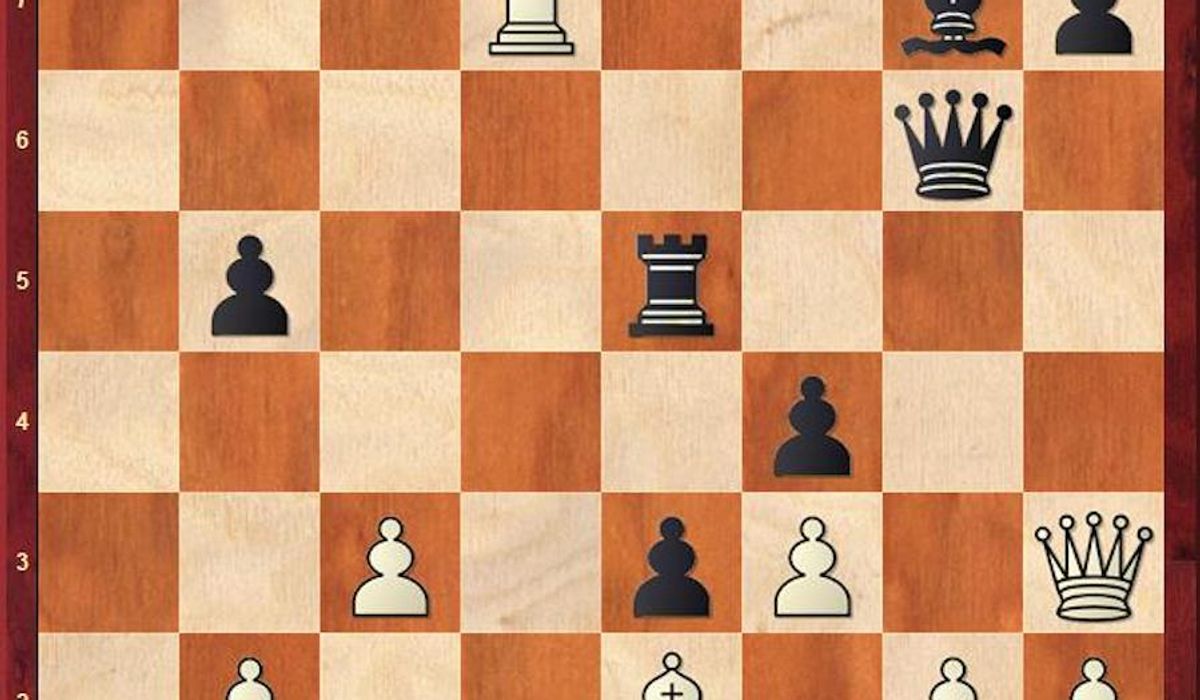Chess GM Evgeny Sveshnikov variation creator dies at 71

Aside from having a mountain, a figure-skating move or a disease named after you, perhaps the surest way to ensure your legacy never dies is to get your name on a chess opening.
Caro and Kann, Richter and Rauzer, Grob and Grunfeld â€" all are immortalized in chess circles today for the opening lines bearing their names than for the games they played. Torquemada may have been the driving force behind the Spanish Inquisition, but Ruy Lopez is the far more famous Spanish prelate of the time, to go by Google hits.
He was a fine player and a world senior champion, but we can probably add Russian Latvian GM Evgeny Sveshnikov â€" who died Aug. 18 at the age of 71 â€" to that list, owing to his explorations of a sharp Sicilian Defense line that now bears his name. Some are calling the ideas Sveshnikov and fellow Russian GM Gennadi Timoshchenko pursued in this double-edged line among the last major opening theory advances of the modern game, not just for its signature 5…e5 thrust (an idea that had been around for a long while) but for the rich system of play the two men developed around that single idea.
The greatest tribute to Sveshnikov’s work is the long line of great players who have made it part of their repertoire, including world champs Garry Kasparov and Magnus Carlsen.
One feels like Mr. Watson in the next room from Alexander Graham Bell playing over the first “Sveshnikov Sveshnikov,†a 1967 win over budding Hungarian star Andras Adorjan. Black accepts a gaping hole at d5 and a badly backward d-pawn for positional counterplay. Although theory now strongly favors 9…gxf6, Svenshikov still manages to get strong lay on the f-file, while that backward d-pawn proves a tough nut to crack.
In the end, Adorjan can’t even give away the exchange to ease the pressure, as the open g-file and Black’s two bishops and queens can’t be contained.
As is often the case, Sveshnikov played only a relative handful of games with his potent new system, once remarking that rival at one USSR championship refused to play 1. e4 against for fear of running into this opening buzz saw. He did collect one notable scalp in the 1978 Soviet title tournament â€" longtime great GM Efim Geller.
One appeal of the Svehsnikov is that it practically guarantees a sharp game and the Geller clash is no exception. Play here is of the highest tactical order, and the result is in doubt until the very end. It’s the veteran who finally cracks after Black offers a daring exchange sacrifice: 28. Nf4 Rxf4!? 29. gxf4 Nf3+ 30. gxf3 Bxc4 31. Qxe4 Bxb3 32. Rb1 Re8 33. Rxa5 d5 34. Re1?? (missing a trick; a justified draw was the likely result after 34. Qxe8+! Qxe8 35. Rxb3 Qg6+ 36. Kf1 Qd3+) Qg6+!, and Black wins at once on 35. Qxg6 Rxe1+ 36. Kg2 hxg6, and there’s no longer a back-rank mate.
Russian GM Vladimir Kramnik is yet another world champ to incorporate the Svenshnikov into his arsenal. The richness of the variation can be seen in the brilliant tilt between Kramnik and Hungarian star GM Peter Leko at the 2004 Linares tournament.
Kramink’s winning ploy is fantastic, trumping White’s ingenious defense with an even more audacious attacking idea: 32. Rad7 (see diagram) Rh5! 33. R7d6 Bf6 34. Rxf6! Qc2!! 35. Qxh5 Qxe2 36. g4 Qf2+, and White resigned facing 37. Kh1 Qxf3+ 38. Kg1 Qxd1+ 39. Kg2 Rxg4+ 40. Qxg4 Qxg4+ 41. Kf1 Qf3+ 42. Ke1 Qf2+ 43. Kd1 Qd2 mate.
Adorjan-Sveshnikov, Hungary-Russia match, Budapest, 1967
1. e4 c5 2. Nf3 Nc6 3. d4 cxd4 4. Nxd4 Nf6 5. Nc3 e5 6. Ndb5 d6 7. Bg5 a6 8. Na3 b5 9. Bxf6 Qxf6 10. Nd5 Qd8 11. c4 Ne7 12. Be2 Nxd5 13. cxd5 g6 14. Nc2 Bh6 15. O-O O-O 16. Qd3 f5 17. f3 Bd7 18. Nb4 Qc7 19. a3 Rf7 20. Kh1 Qb6 21. b3 Raf8 22. Ra2 Qd8 23. g3 fxe4 24. fxe4 Qe8 25. Bf3 Bh3 26. Raf2 g5 27. g4 Bxg4 28. Kg2 Qd7 29. Kg3 Bh3 30. Bh5 Rf4 31. Rxf4 gxf4+ 32. Kf3 Qg7 White resigns.
Geller-Sveshnikov, 46th USSR Championship, Tbilisi, Georgia, December 1978
1. e4 c5 2. Nf3 Nc6 3. d4 cxd4 4. Nxd4 Nf6 5. Nc3 e5 6. Ndb5 d6 7. Bg5 a6 8. Na3 b5 9. Nd5 Be7 10. Bxf6 Bxf6 11. c3 O-O 12. Nc2 Bg5 13. a4 bxa4 14. Rxa4 a5 15. Bc4 Rb8 16. b3 Kh8 17. O-O f5 18. exf5 Bxf5 19. Qe2 Qd7 20. Nce3 Be6 21. Rd1 Bd8 22. Ra2 Qf7 23. Qd3 Qh5 24. Nf1 e4 25. Qc2 Bh4 26. Ng3 Bxg3 27. hxg3 Ne5 28. Nf4 Rxf4 29. gxf4 Nf3+ 30. gxf3 Bxc4 31. Qxe4 Bxb3 32. Rb1 Re8 33. Rxa5 d5 34. Re1 Qg6+ White resigns.
Leko-Kramnik, Linares International Chess Tournament, Linares, Spain, February 2004
1. e4 c5 2. Nf3 Nc6 3. d4 cxd4 4. Nxd4 Nf6 5. Nc3 e5 6. Ndb5 d6 7. Bg5 a6 8. Na3 b5 9. Bxf6 gxf6 10. Nd5 f5 11. Bd3 Be6 12. O-O Bxd5 13. exd5 Ne7 14. Qh5 e4 15. Be2 Bg7 16. c3 Rc8 17. Nc2 Rc5 18. Ne3 f4 19. Nf5 O-O 20. a4 Nxf5 21. Qxf5 Qe7 22. axb5 axb5 23. Qxf4 Rxd5 24. Rfd1 Re5 25. Qe3 f5 26. Qb6 f4 27. Qxd6 Qg5 28. f3 e3 29. Ra7 Kh8 30. Qd7 Rg8 31. Qh3 Qg6 32. Rad7 Rh5 33. R7d6 Bf6 34. Rxf6 Qc2 35. Qxh5 Qxe2 36. g4 Qf2+ White resigns.
• David R. Sands can be reached at 202/636-3178 or by email at dsands@washingtontimes.com.
Sign up for Daily NewslettersThank you for being a Washington Times reader. Comments are temporarily disabled. We apologize for the inconvenience.
0 Response to "Chess GM Evgeny Sveshnikov variation creator dies at 71"
Post a Comment